Exploring Nancy, the French City of Elegance
Let's explore the capital of the Dukes of Lorraine, which is also my birthplace.
Normally, this article would have been tucked away behind a little padlock, reserved for paying subscribers.
But today is a special day: it’s my birthday, or it was when I published this :)
And since I was born in Nancy, it would feel rather rude to celebrate on my own without inviting you to the party. 🥳
So here’s my gift: a tour of Nancy, free for everyone – paying subscribers and free readers alike.
Because sometimes, sharing your favourites is even better than sharing a slice of cake (although, between us, a mirabelle plum cake could put up a good fight).
And let me warn you: Nancy isn’t just “a pretty city in the east of France.”
It’s an explosive mix of royal grandeur, medieval charm, daring Art Nouveau, and leafy corners where you can breathe.
Not forgetting a few gourmet specialities that could easily lure even the most disciplined visitor away from their carefully planned itinerary.
Right then, lace up your comfortable shoes (cobbled streets may be pretty, but they’re not forgiving), and let’s explore my hometown as if you were right there with me.
1. The three UNESCO-listed squares: a winning trio
Nancy is unusual in that its historic centre isn’t limited to an old town or a museum district: here, you’ll find three squares listed as UNESCO World Heritage sites.
It’s a bit like having three queens in a game of chess… except here, all of them win.
1.1 Place Stanislas – the undisputed star
There’s no other place to start. Place Stanislas is the postcard.
But not the static, frozen sort.
Here, everything moves. Children chase pigeons, café terraces fill up at the first ray of sunshine, and Jean Lamour’s gilded wrought ironwork glitters even when the sky is being shy.
A little historical reminder: in the mid-18th century, Stanislas Leszczynski – exiled King of Poland, father-in-law to Louis XV, and Duke of Lorraine – decided to modernise and embellish his capital.
His idea? To create a monumental space linking the medieval town and the new town, while paying tribute to his royal son-in-law.
The result: Place Stanislas, inaugurated in 1755, was designed by architect Emmanuel Héré.
What strikes you is the harmony: each façade follows strict symmetry, softened by sculpted details and balustrades.
Jean Lamour’s wrought iron gates, crafted like lace, are masterpieces in their own right.
And the fountains by Barthélémy Guibal – with Neptune and Amphitrite seemingly keeping watch – add a theatrical touch.
Insider tip: come early in the morning, when the square belongs to delivery vans and early risers.
In the afternoon, it turns into an open-air drawing room.
And in the evening, the lighting is nothing short of magical.
1.2 The Triumphal Arch / Porte Héré – an antique wink
Leaving Place Stanislas on the north side, you pass under the Triumphal Arch, or Porte Héré.
Built between 1754 and 1756, it pays homage to Louis XV, adorned with sculpted military trophies, allegorical figures, and Latin inscriptions (perfect for feeling cultured while trying to decipher them).
It acts as a visual and symbolic link to Place de la Carrière, opening onto a perspective worthy of an opera set.
1.3 Place de la Carrière – the ceremonial corridor
This elongated square has long been used for noble pursuits: tournaments, jousts, parades.
Its name, Carrière, comes from the old French word for “racecourse.”
It’s lined with regular classical façades, with elegant pavilions framing the view at each end.
Under the Ancien Régime, it was the playground of the upper classes – a place to see and be seen.
Rather like today’s social media… only with more lace and fewer filters.
1.4 Place d’Alliance – the little gem
Just a short walk away, Place d’Alliance is far more intimate.
It commemorates the alliance between France and Austria, signed in 1756.
Its central fountain, surrounded by neatly trimmed trees, was created by Paul-Louis Cyfflé.
The sculptures represent the Meurthe, Moselle, and Meuse rivers – a tribute to Lorraine’s waterways.
It’s the perfect spot for a discreet pause, in the shade, with the murmur of water as your background music.
2. The Old Town: a journey back in time
Nancy wasn’t built in a day – and certainly not in the 18th century.
Its medieval heart is still there, nestled around the Grand’Rue, its cobbled lanes, and its historic monuments.
2.1 Grand’Rue and Saint-Epvre Church
The Grand’Rue is the historic artery, laid out in the Middle Ages, that once ran through the city from north to south.
Today, it’s lined with shops, cafés, and private mansions whose façades sometimes lean at intriguing angles – silent witnesses to a turbulent past.
At its centre stands Saint-Epvre Church (19th century), impressive for its size and its neo-Gothic style.
Its multi-coloured stained-glass windows, slender spire, and sculpted porch make it a landmark on the skyline.
It replaced an older church and was built as a tribute to Saint Epvre, the first Bishop of Toul.
2.2 The Ducal Palace and its Gatehouse
The Ducal Palace was the official residence of the Dukes of Lorraine until the duchy was annexed by France in 1766.
Built between the 15th and 16th centuries, it blends flamboyant Gothic with Renaissance elegance.
Its gatehouse is pure stone lacework, with rounded arches, slender columns, and allegorical sculptures.
Today, the building houses the Musée Lorrain, home to paintings, sculptures, and artefacts linked to regional history – a place where history turns like the pages of an album (though it’s still closed to visitors thanks to those never-ending renovations!).
2.3 Porte de la Craffe
Built in the 14th century, the Porte de la Craffe is one of the few surviving remnants of Nancy’s medieval fortifications.
Its two round towers, topped with pepper-pot roofs, flank a vaulted passage that once controlled access to the city.
Over the centuries, it also served as a prison.
Today, you can stroll through freely – though the stern grey stone is a firm reminder that in the past, the city knew exactly how to defend itself.
3. Art Nouveau: when the city starts to ripple… quite literally
At the end of the 19th century, Nancy found itself in a rather unique position.
Alsace-Moselle had just been annexed by Germany (1871), and many Francophile artists and industrialists fled Strasbourg or Metz to settle… in Nancy.
The city became a buzzing hotbed of creativity – and that creative wave took on a name: the École de Nancy.
The principle? To weave beauty into everyday life.
Art was no longer to be confined to museums: it should appear everywhere – in furniture, tableware, light fittings… and, of course, on building façades.
The inspiration came from nature: flowers, stems, insects, seaweed – anything could be turned into flowing, organic forms.
The Villa Majorelle: a manifesto in itself
Built in 1901 for Louis Majorelle, master cabinetmaker, this house is one of the very first works of Art Nouveau in France.
Designed by Henri Sauvage (a fitting name for a style inspired by the natural world), it combines stone, brick, wood, and wrought iron.
The bay windows feel like tailor-made frames for invisible paintings, the fireplaces have curving lines that seem to have stepped out of a fairytale, and the stained glass filters the light as though through a canopy of leaves.
Visiting the villa, you get the impression that every detail speaks to another: the floral motif on the staircase banister reappears in the door handles, the lamps mimic flower buds just about to bloom…
It’s a real treasure hunt for lovers of detail.
The Musée de l’École de Nancy: Art Nouveau in concentrated form
Housed in the Villa Corbin and surrounded by a garden that acts as its showcase, the museum gathers together some of the movement’s most iconic pieces:
the poetic glasswork of Émile Gallé, where dragonflies and orchids are frozen in light,
Majorelle’s carved furniture,
Jacques Gruber’s stained glass, which can turn a single ray of sunlight into an Impressionist painting.
Insider tip: don’t miss the period aquarium in the winter garden.
Forget today’s rectangular tanks – here, the cabinet, the glass, and the wrought iron come together as a complete work of art.
The streets as an open-air gallery
Art Nouveau in Nancy isn’t locked away in museums – it strolls through the streets.
In the Saint-Léon district, you’ll find the Maison Bergeret, a masterpiece of harmony between stained glass, mosaics, and wrought ironwork.
In the Saurupt district, villas with poetic names – Villa Fougère, Villa Les Glycines – compete for creativity.
And this is when you realise that Art Nouveau ages well.
Even more than a century later, these façades still carry a slightly avant-garde air – as if they were still moving.
4. The Cathedral and Other Religious Buildings
The Cathedral of Notre-Dame-de-l’Annonciation
Built between 1703 and 1742 to designs by Jules Hardouin-Mansart and Germain Boffrand, the cathedral is a pure expression of French classicism.
From the outside, its façade is a masterclass in symmetry: Corinthian columns, niches with statues, and a triangular pediment crowning the whole.
Inside, light streams in through tall windows and reflects off white and gilded stuccowork.
The organ, built by Nicolas Dupont in 1763, sits above the entrance like a king surveying his court from the balcony.
Notre-Dame de Bonsecours Church
Located to the east of the city centre, in the Bonsecours district, this church doesn’t always make it onto the standard tourist trail… yet it’s well worth the detour.
Built in the 18th century, it is inseparable from the figure of Stanislas Leszczynski, who intended it as his family mausoleum.
Baroque in style, it surprises with its light, understated façade, dominated by a slender bell tower.
Inside, the baroque decoration is spectacular, yet the atmosphere remains calm and full of light.
In the chancel, you’ll find the tomb of Stanislas himself, alongside that of his wife, Catherine Opalinska.
Attentive visitors will notice the coats of arms and inscriptions in Polish, a reminder of the royal couple’s origins.
Saint-Sébastien Church
Less well known to visitors, this 18th-century baroque church stands near Rue Saint-Dizier.
Its façade, framed by columns and adorned with statues, catches the eye and invites you to step inside.
5. The Pépinière Park: Nancy’s green lungs
If Place Stanislas is the beating heart of Nancy, the Pépinière is its lungs.
And what lungs they are! Twenty-one hectares of greenery right in the centre, created in 1765 by Stanislas.
Originally, it was a practical space: producing trees for the ducal gardens and avenues.
But it quickly became a place for the people of Nancy to stroll.
Today, it’s an intergenerational meeting ground: early-morning joggers, retirees loyal to “their” bench, children feeding the ducks (even if the signs politely ask them not to).
You’ll find here:
a fragrant rose garden,
sculptures, including a Rodin,
one of the most beautiful bandstands in France.
The park changes its face with the seasons: a burst of flowers in spring, welcome shade in summer, a golden carpet in autumn, a hushed calm in winter.
And all this is just two minutes from Place Stanislas.
Conclusion – Nancy, elegant and full of life
Nancy is a delicate balance between monumental grandeur and human warmth.
Its UNESCO-listed squares, medieval heart, Art Nouveau heritage, and green spaces make it a complete destination.
And to finish on a delicious note, don’t leave without tasting:
the Bergamote de Nancy,
quiche lorraine (the real thing!),
tarte à la mirabelle,
macarons des Sœurs,
madeleines from Commercy or Liverdun.
Have you been to visit Nancy? Which is your favourite part? We’d love to hear about your experience.
Introducing Contributor, Pierre Guernier:
Visit his Contributor Page — Explore more of Pierre’s work [→note: link may not be live yet due to website migration - thanks for understanding.]


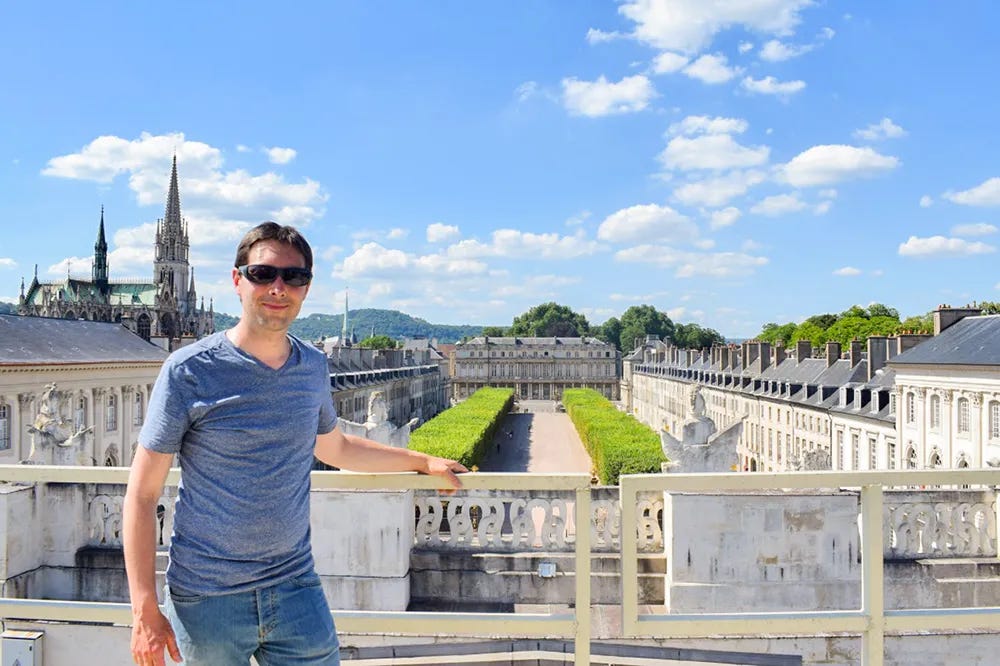

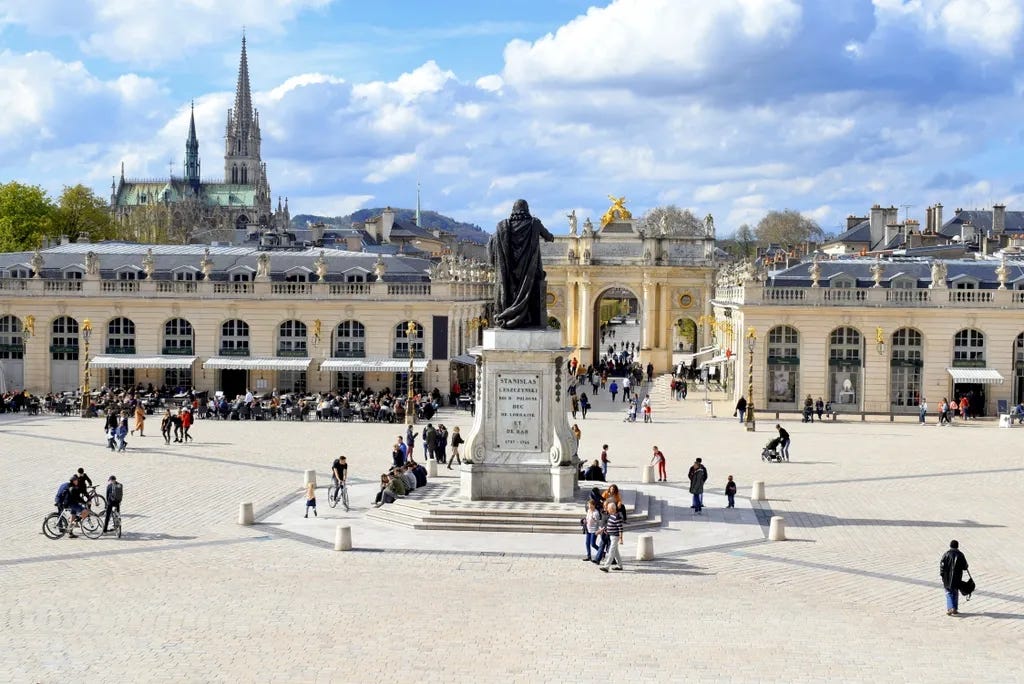
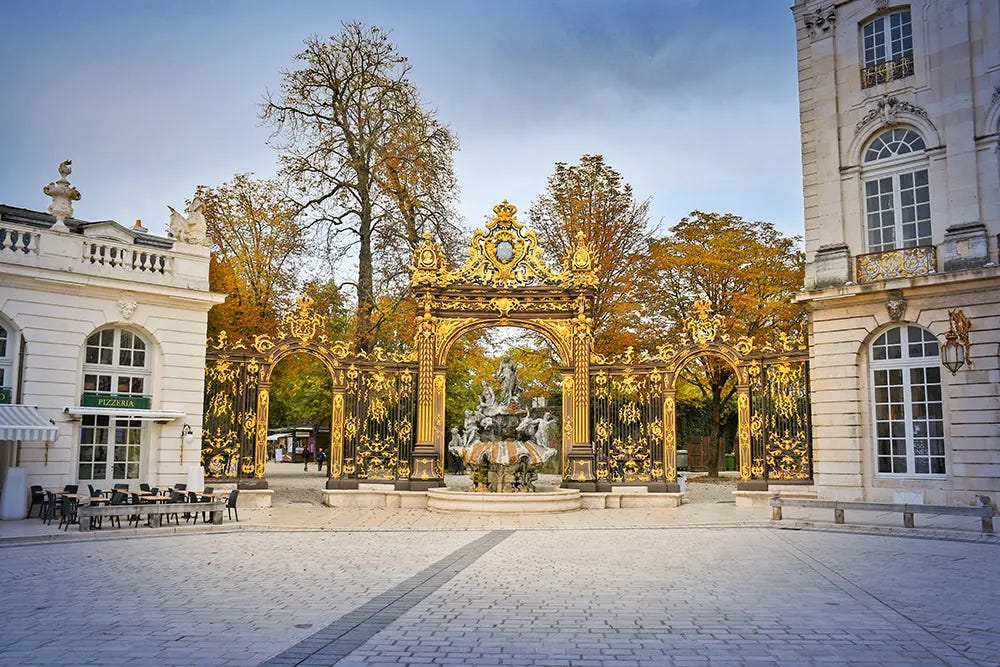
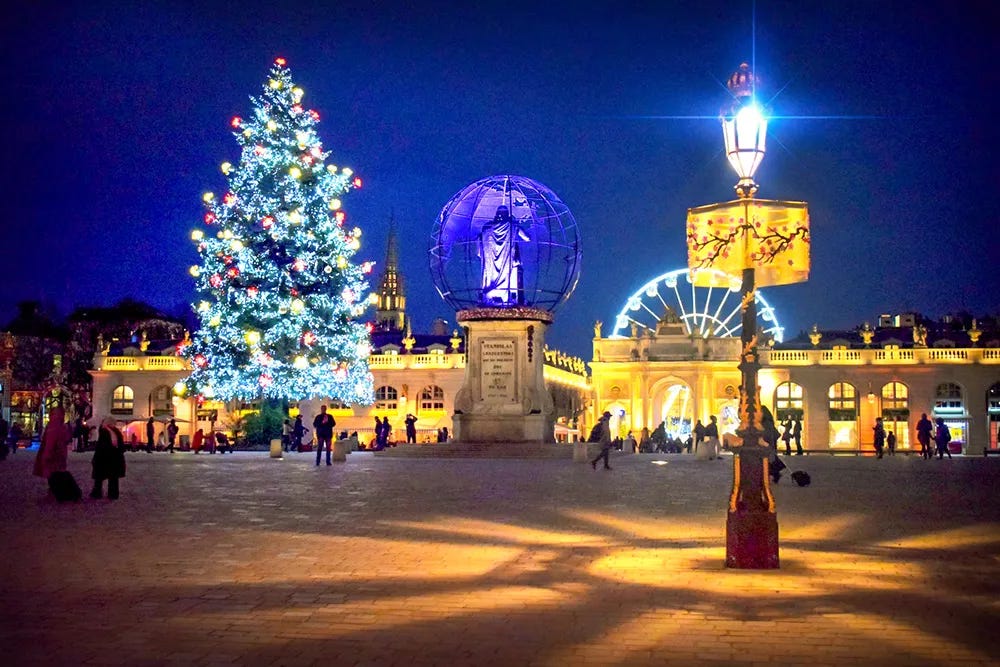
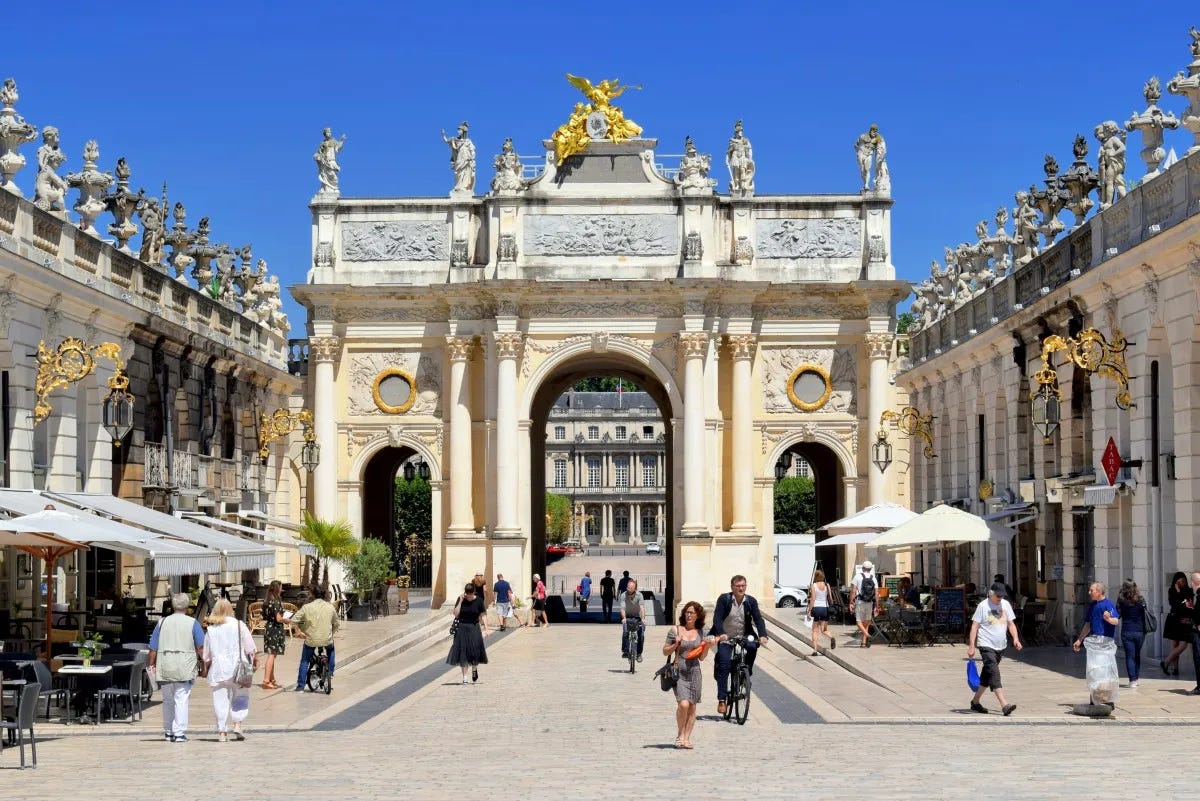
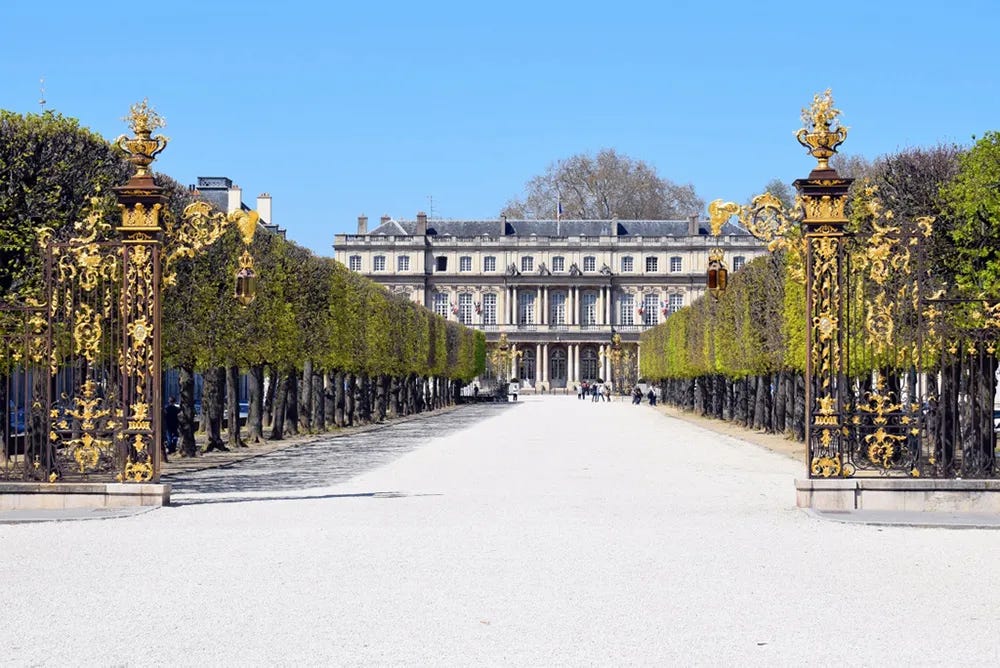
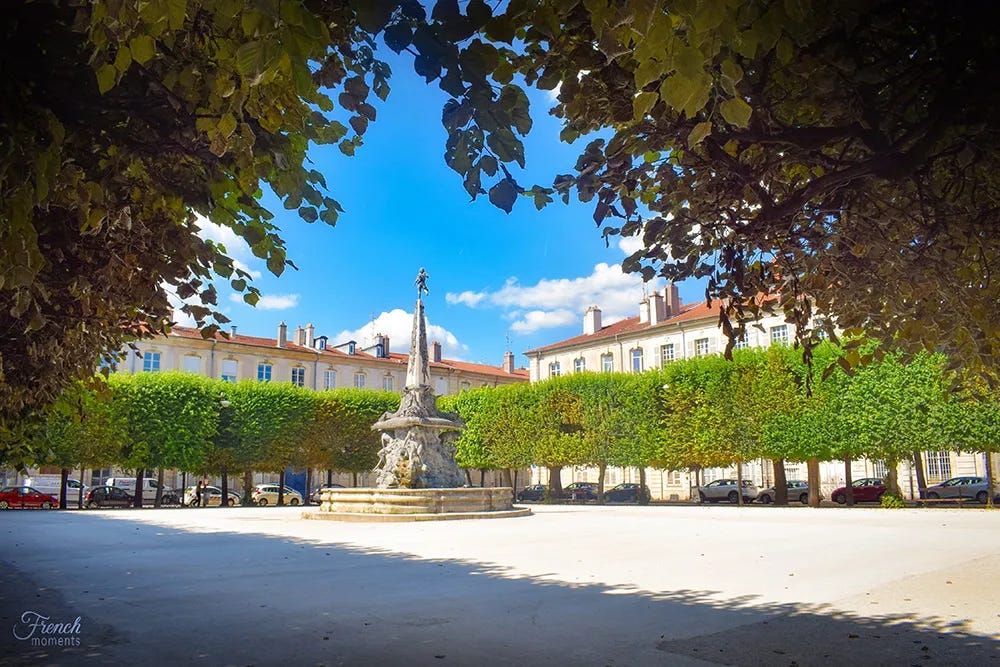

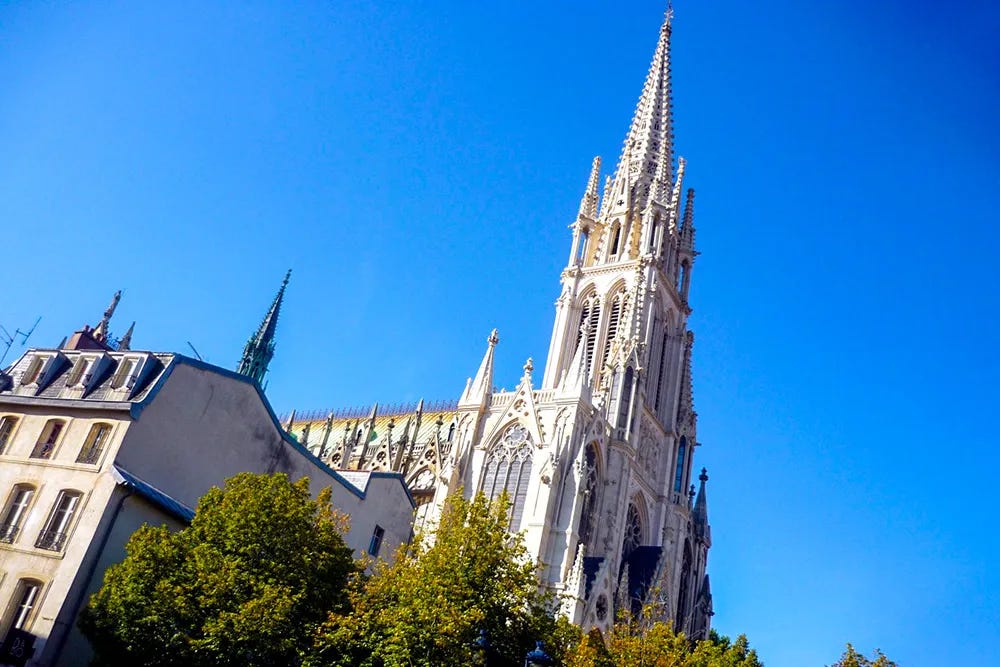

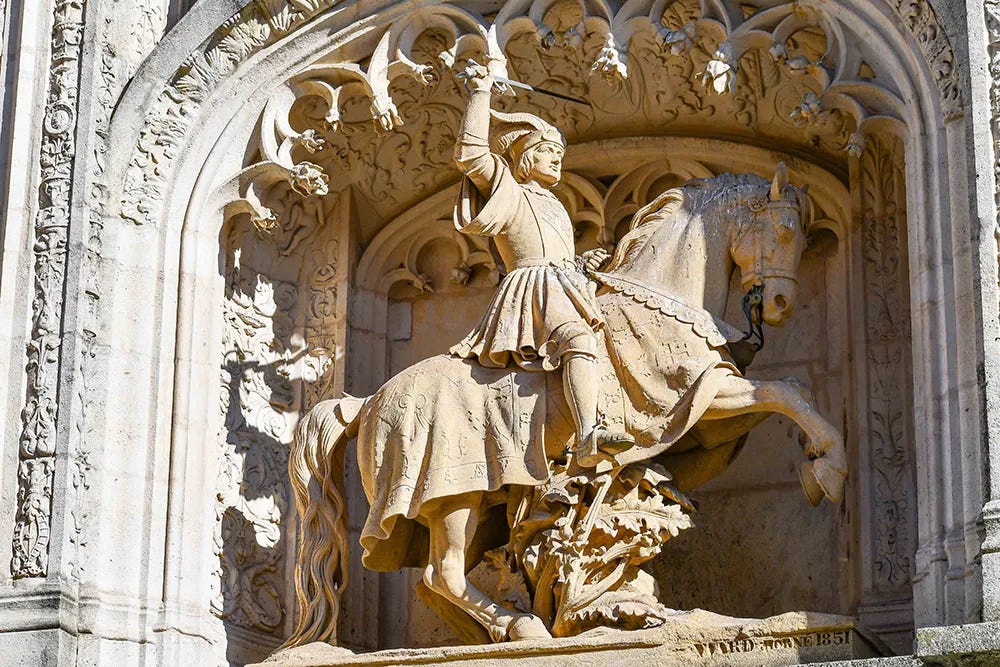
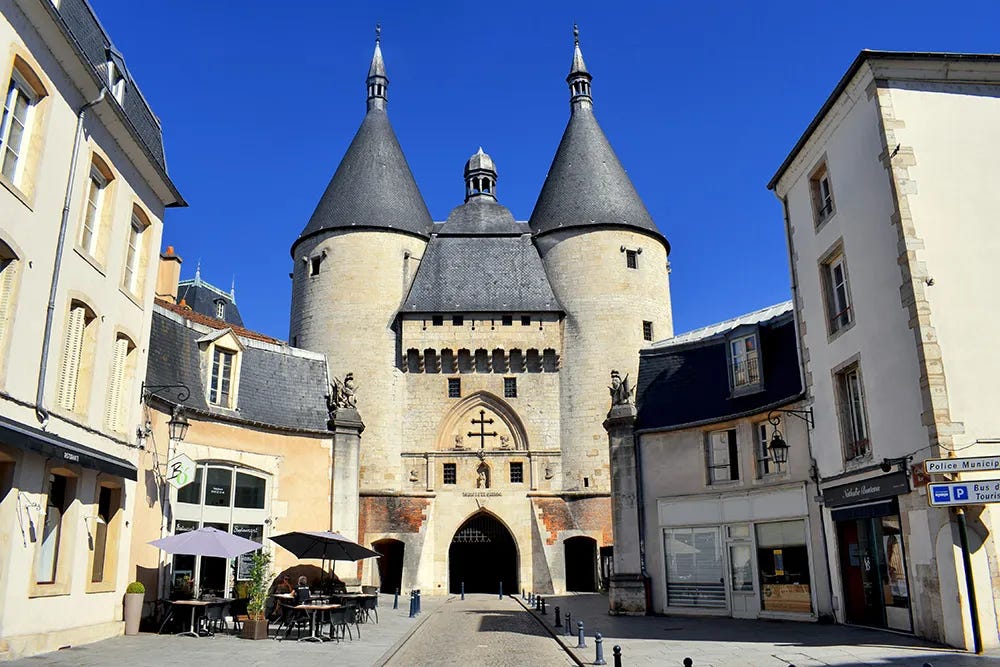

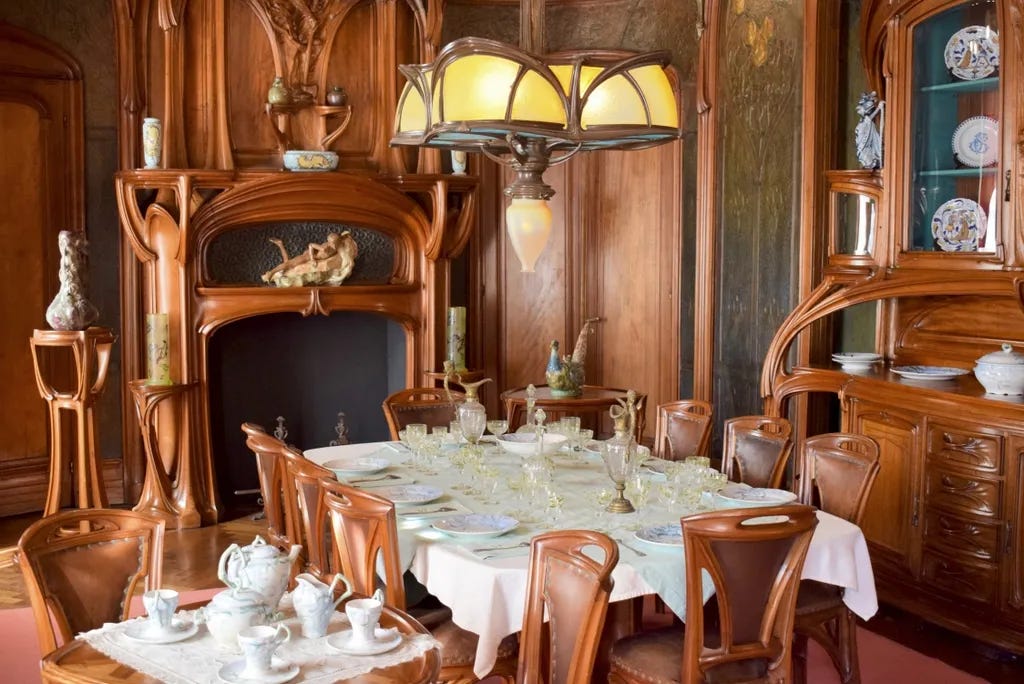
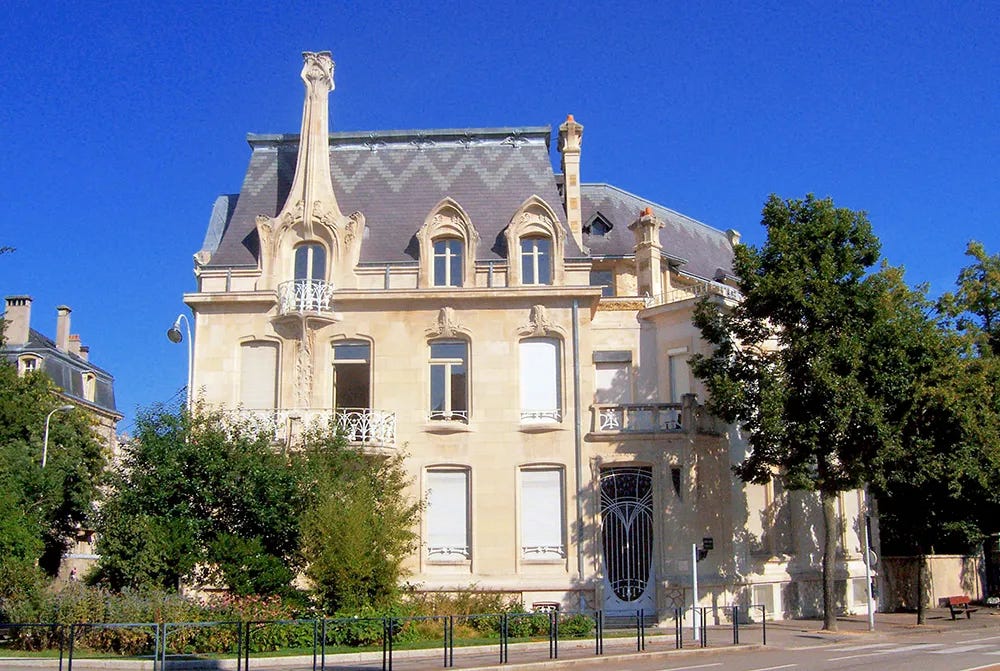
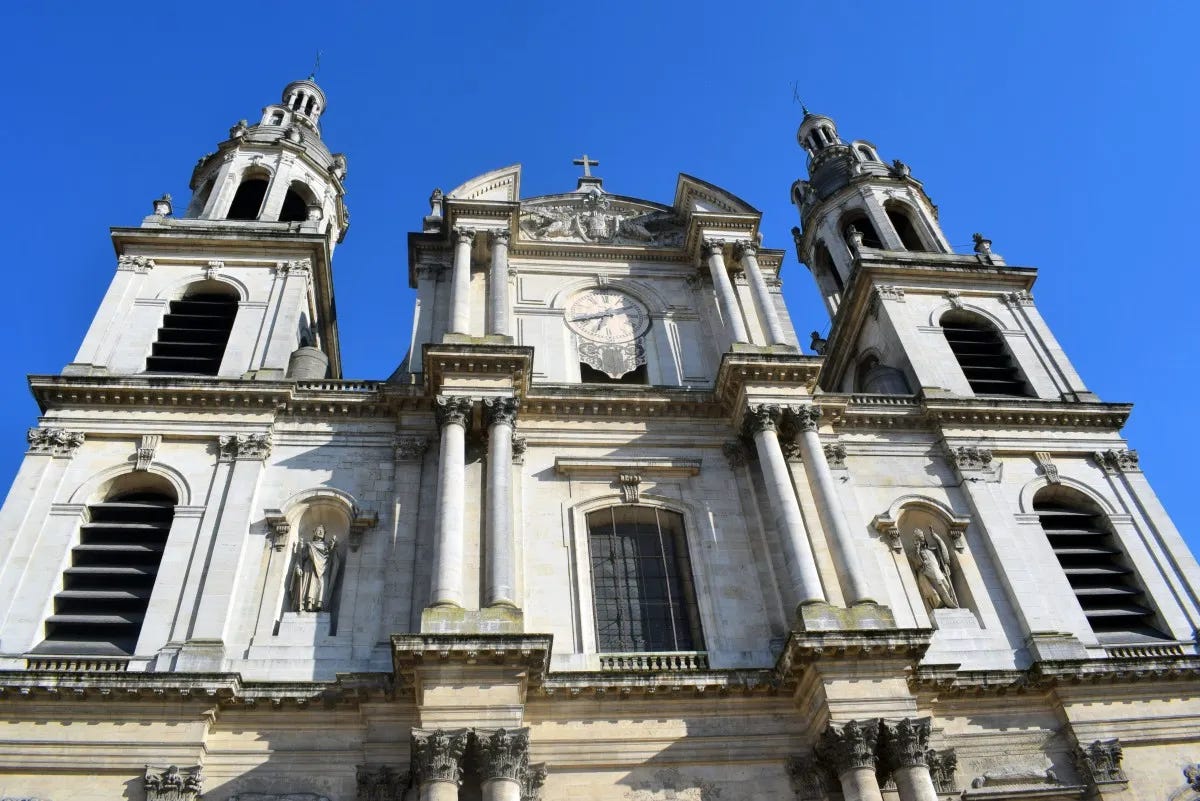
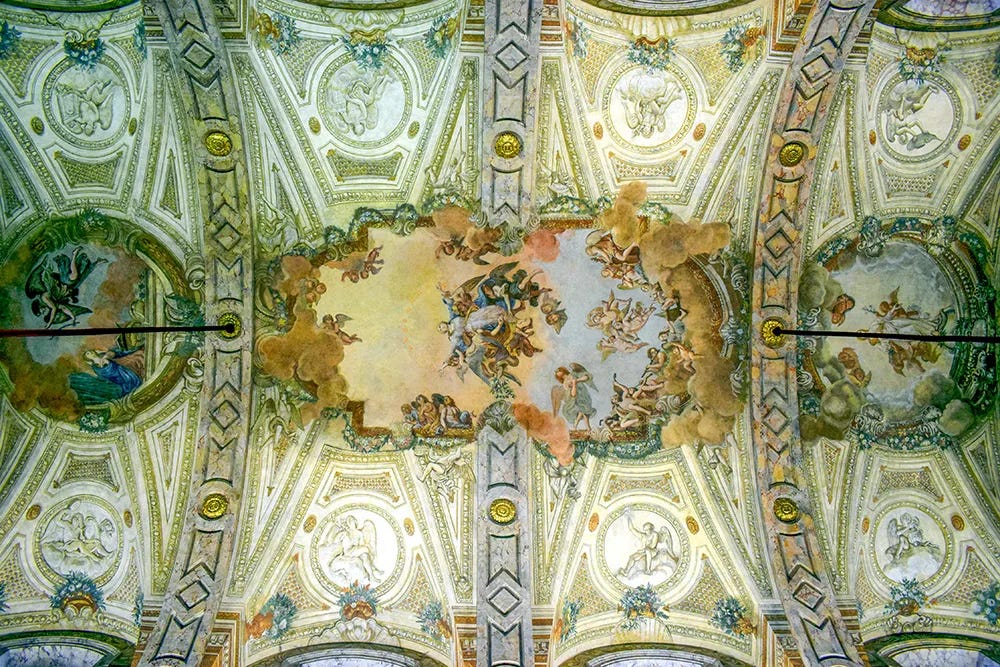

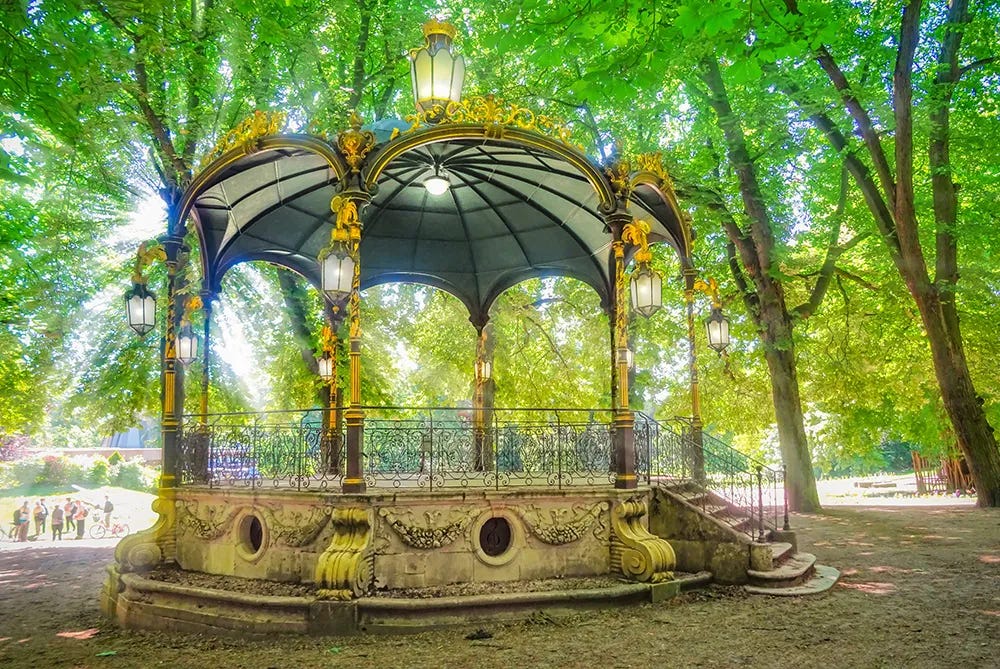
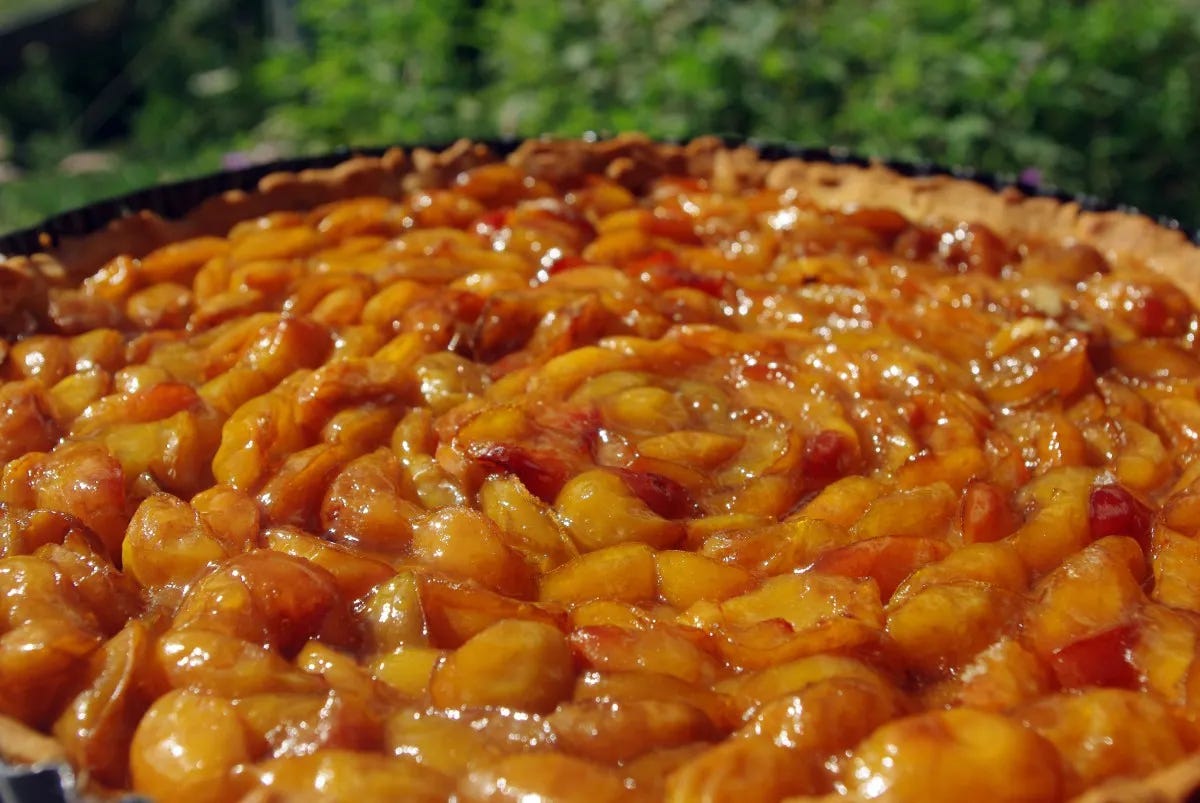
Thank you for sharing your article, birthday and hometown! I had the absolute pleasure of spending 4 days in Nancy when I was visiting for the Christmas markets in 2023 and stayed over between Paris and Strasbourg. I was absolutely enchanted!!! I have been wanting to go back ever since - especially to visit when the weather in nice!
Happy Birthday and what a beautiful piece of writing- thank you.